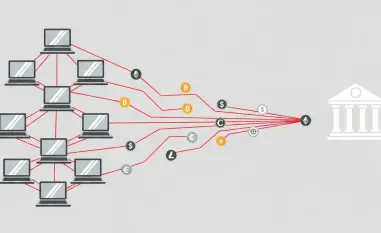In the ever-evolving landscape of cybersecurity, recent developments have highlighted significant shifts in tactics and technologies. The integration of artificial intelligence (AI) and machine learning (ML) in both offensive and defensive strategies, coupled with novel ransomware methods, is reshaping how organizations approach security. These changes pose both challenges and opportunities, requiring a nuanced understanding of the current landscape to effectively protect digital assets. This article delves into emerging trends, providing valuable insights into the challenges and opportunities they present.
The Rise of AI in Cybersecurity
Artificial intelligence and machine learning are revolutionizing cybersecurity by enhancing threat detection and response capabilities. These technologies enable faster analysis of vast amounts of data, identifying patterns and anomalies that may indicate a security breach. AI-driven tools can predict potential threats, allowing organizations to proactively address vulnerabilities before they are exploited. This predictive power marks a fundamental shift in how security measures are implemented, prioritizing preemptive action over reactive responses.
However, the same technologies that bolster defenses are also being leveraged by cybercriminals. AI and ML can automate and refine attacks, making them more sophisticated and harder to detect. For instance, AI can be used to craft more convincing phishing emails or to find and exploit vulnerabilities more efficiently. This dual-edged nature of AI in cybersecurity necessitates a balanced approach, where the benefits of advanced technology are harnessed while mitigating the risks it poses. The challenge lies in developing AI systems that can outpace their malicious counterparts, a task that requires continuous innovation and adaptation.
Novel Ransomware Tactics: Beyond Traditional Methods
Ransomware attacks have traditionally relied on encrypting victims’ data and demanding a ransom for its release. However, a new tactic has emerged, exemplified by the group Codefinger, which encrypts AWS S3 data using server-side encryption with customer-provided keys (SSE-C). This method locks users out of their data without deploying conventional ransomware software, complicating detection and prevention efforts. This innovative approach circumvents traditional security measures, requiring new strategies for anticipation and defense.
Organizations must adapt their security measures to counter these innovative tactics. Enhanced monitoring of access controls and encryption key management is crucial to prevent unauthorized encryption of critical data. This shift in ransomware strategy underscores the need for continuous evolution in cybersecurity practices to stay ahead of malicious actors. Regular audits, updated encryption protocols, and robust key management systems are essential components of an effective defense strategy in this new landscape.
Data Leaks and Vulnerabilities: A Persistent Threat
Data leaks and vulnerabilities remain a significant concern for organizations worldwide. The recent leak of configuration files from over 15,000 Fortinet Fortigate firewalls, which included administrative and user credentials, highlights the severe risks associated with such incidents. Affected entities must promptly update their configurations and change credentials to mitigate potential breaches. The immediacy of the threat underscores the importance of quick, decisive action in the wake of data leaks to minimize potential damage.
Similarly, critical vulnerabilities in platforms like SimpleHelp and Rsync require immediate attention. Organizations using these tools should apply patches and updates to prevent remote code execution attacks. Regular audits and proactive vulnerability management are essential to safeguard against exploitation and ensure robust cybersecurity defenses. Staying current with updates and patches, coupled with regular security assessments, can significantly reduce the risk of exploitations and breaches.
Identity-based Attacks: The Growing Sophistication
Identity-based attacks are becoming increasingly sophisticated, driven by advancements in AI and ML. These attacks target user identities and credentials, exploiting weaknesses in authentication and access control mechanisms. The rise of such attacks necessitates a comprehensive approach to identity management, incorporating multi-factor authentication and continuous monitoring of user activities. This multi-layered approach helps to ensure that even if one defensive measure is compromised, additional barriers prevent unauthorized access.
AI and ML can also enhance defense mechanisms against identity-based attacks. By analyzing user behavior and detecting anomalies, these technologies can identify potential threats in real time. However, the balance between security and usability remains a critical challenge, requiring organizations to implement solutions that protect user identities without hindering productivity. Striking this balance is vital to maintaining an effective security posture without compromising the user experience.
The Evolving Role of CISOs in Strategic Planning
Chief Information Security Officers (CISOs) play a pivotal role in navigating the complex cybersecurity landscape. As threats evolve, CISOs must elevate cybersecurity discussions within boardrooms, ensuring that security considerations are integrated into strategic planning. Effective communication and the implementation of comprehensive cybersecurity frameworks are essential for addressing emerging threats. This strategic integration helps organizations to align their security measures with business objectives, maximizing both security and operational efficiency.
Generative AI (GenAI) is becoming a valuable tool for CISOs, offering new capabilities in threat detection and incident response. By leveraging AI-driven insights, CISOs can enhance their organizations’ security postures and respond more effectively to incidents. The evolving role of CISOs underscores the importance of strategic leadership in maintaining robust cybersecurity defenses. This leadership ensures that organizations are not just reacting to threats but proactively strengthening their security landscape.
Open-source Tools and Community Collaboration
Open-source tools have become instrumental in enhancing threat detection and intelligence gathering. Platforms like Contextal and Chainsaw facilitate collaboration within the cybersecurity community, enabling faster responses to emerging threats. These tools empower organizations to leverage collective knowledge and resources, strengthening their security measures. The collaborative nature of open-source tools helps to foster innovation and shared defense strategies, enhancing overall security resilience.
Community engagement is crucial for maintaining robust security standards. By participating in open-source projects and sharing insights, organizations can contribute to the development of more effective security solutions. The collaborative nature of the cybersecurity community is a powerful asset in the fight against evolving threats. This collective effort ensures that security measures are continuously improved and adapted to meet the challenges posed by new and emerging threats.
Regulatory and Compliance Challenges
High-profile breaches, such as the data compromise at the EU Agency for Law Enforcement Training (CEPOL), highlight the critical need for stringent regulatory compliance. Organizations must implement proactive measures to safeguard personal data and adhere to regulatory requirements. Failure to comply with regulations can result in severe consequences, including financial penalties and reputational damage. Ensuring compliance is not just a legal obligation but a critical component of protecting organizational integrity and trust.
Ensuring compliance involves regular audits, risk assessments, and the implementation of robust data protection strategies. Organizations must stay informed about evolving regulatory landscapes and adapt their practices accordingly. Proactive compliance efforts are essential for mitigating risks and maintaining trust with stakeholders. Adapting to regulatory changes and ensuring compliance across the organization helps to minimize legal and financial risks associated with data breaches.
Innovations in Digital Banking Security
In the rapidly changing field of cybersecurity, recent advancements underscore significant shifts in both tactics and technologies. The inclusion of artificial intelligence (AI) and machine learning (ML) in both offensive and defensive strategies is revolutionizing how organizations address security challenges. Moreover, the advent of new ransomware techniques is further complicating the security landscape, necessitating a more sophisticated approach to protecting digital assets.
These transformations bring both challenges and opportunities, emphasizing the need for a deep understanding of the current cybersecurity environment to effectively safeguard against threats. This article explores emerging trends, offering insightful perspectives on the hurdles and possibilities that modern cybersecurity practitioners face. As AI and ML become integral to security frameworks, organizations must adapt to counteract increasingly complex cyber threats. Staying ahead in cybersecurity now demands a blend of innovative technology and strategic insight, making it imperative for professionals to stay informed and agile in their approaches.













